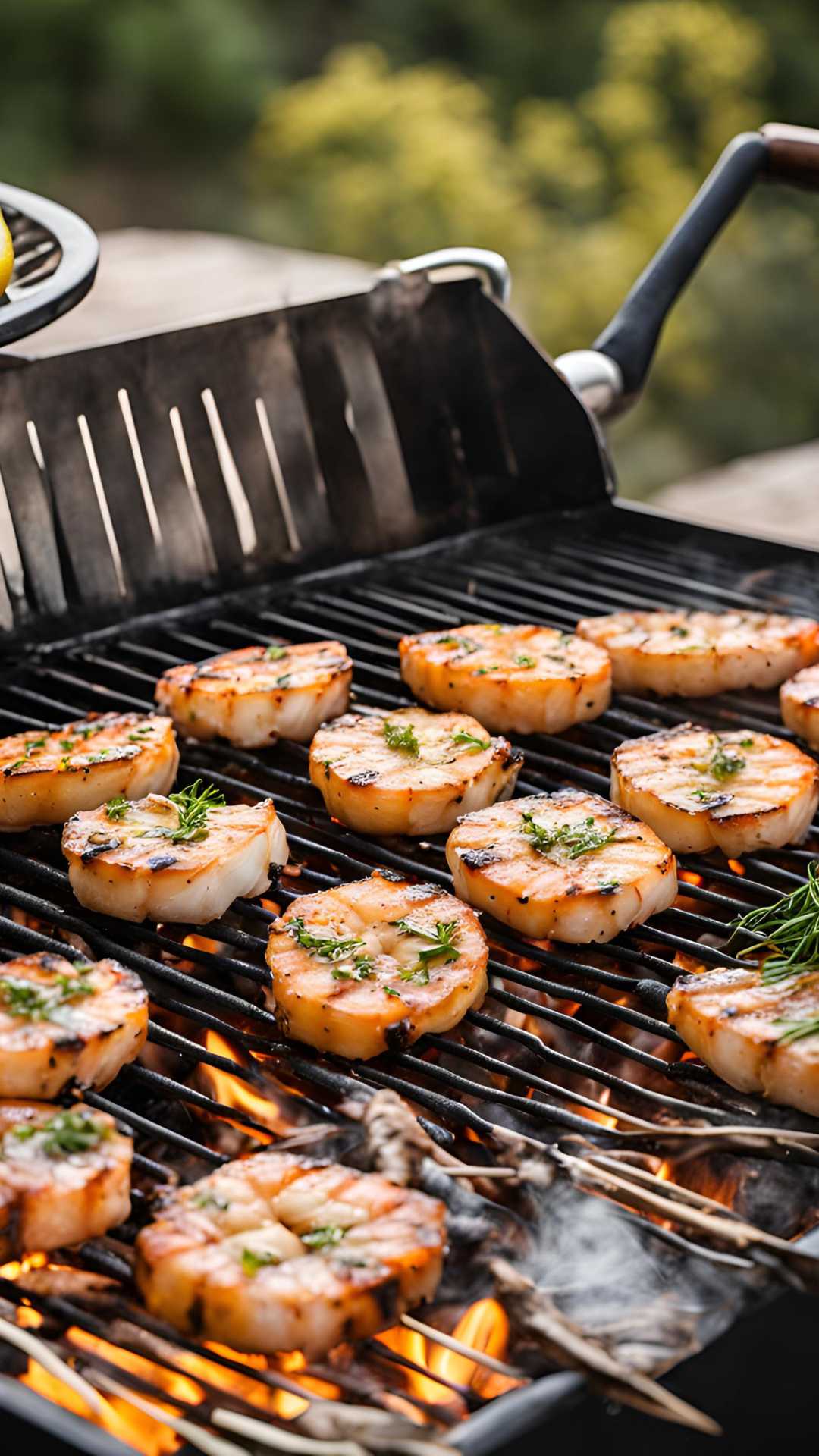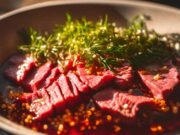- Key Takeaways:
- Step 1: Choosing the Right Seafood
- Step 2: Preparing Your Seafood
- Step 3: Marinating for Maximum Flavor
- Step 4: Choosing the Right Grill
- Step 5: Preheating Your Grill
- Step 6: Grilling Techniques for Moist Seafood
- Step 7: Timing and Doneness
- Step 8: Finishing Touches
- Step 9: Common Mistakes to Avoid
- FAQs About Grilling Delicate Seafood
- Frequently Asked Questions
Grilling delicate seafood can be a rewarding yet intricate culinary endeavor.
Given its unique properties and flavors, seafood necessitates a careful approach to maintain its moisture and enhance its taste on the grill. This guide encompasses all aspects, from selecting the appropriate fish to preparing it for grilling, as well as mastering techniques that prevent overcooking.
Whether you are an experienced griller or just starting out, these insights will assist you in elevating your seafood dishes and impressing your guests with perfectly grilled, succulent flavors.
Key Takeaways:
- Choose the right seafood and prepare it properly for more flavorful grilling results.
- Control grill temperature and use indirect heating methods to keep delicate seafood moist and tender.
- Avoid common mistakes when grilling seafood, and use glazes and garnishes to enhance flavor after cooking.
Step 1: Choosing the Right Seafood
Selecting the appropriate seafood for grilling is essential for creating an enjoyable dining experience. Each type of fish, including swordfish, halibut, and shrimp, possesses unique characteristics that impact their cooking methods.
Understanding these differences will enhance the quality of your meal and ensure optimal results.
Step 2: Preparing Your Seafood
Proper preparation of seafood is essential for achieving the best grilling results. Techniques such as cleaning, cutting, and marinating significantly enhance both flavor and texture.
Understanding how to handle different types of seafood is crucial. For example, when cleaning fish, it’s important to use a scaling tool to remove the scales, which ensures a clean surface for grilling. Shellfish, such as shrimp, should have their shells removed and deveined to eliminate any gritty textures. After cleaning, cutting seafood into uniform pieces is vital for even cooking.

Always utilize a separate cutting board for seafood to avoid cross-contamination. Additionally, to maintain freshness, place cleaned seafood on ice if it will not be cooked immediately. By following these safety precautions and techniques, you not only preserve the quality of the seafood but also elevate the overall grilling experience.
Step 3: Marinating for Maximum Flavor
Marinating seafood is an excellent method for infusing it with bold flavors and enhancing its natural taste. By using ingredients such as olive oil, garlic, and fresh herbs like dill and parsley, you can create a delightful experience for your palate.
There are numerous marinades and techniques that can be customized for various types of seafood, ranging from delicate white fish to hearty salmon. A citrus-based marinade, for instance, pairs exceptionally well with shrimp, offering a zesty brightness that complements their natural sweetness. For richer fish like tuna, a blend of soy sauce and ginger works wonders, imparting a savory depth of flavor.
It is essential to prioritize the freshness of your ingredients, as this can significantly influence the overall quality of the dish. Balancing the seasoning is equally vital; overly strong flavors can overshadow the exquisite essence of seafood. Keeping these factors in mind will lead to a harmonious and memorable meal.
Step 4: Choosing the Right Grill
Selecting the right grill is a crucial step in the seafood grilling process. You have options such as gas, charcoal, or electric grills, each providing unique advantages that can help you achieve perfectly cooked fish.
Step 5: Preheating Your Grill
Preheating your grill is a crucial step to ensure that seafood cooks evenly and retains its moisture, with the ideal temperature varying based on the type of fish being grilled.
Different seafood varieties, such as delicate shrimp or hearty salmon, necessitate specific temperature ranges to achieve the perfect texture and flavor. For example, shrimp cooks best at approximately 400°F, while salmon benefits from a slightly lower temperature to prevent drying out.
Monitoring these precise temperatures can be challenging; however, this is where grill thermometers become invaluable. These tools enable you to maintain optimal cooking conditions, ensuring that each piece is grilled to perfection.
When the right temperatures are achieved, seafood not only tastes better but also retains its nutrients and natural juices, transforming a simple meal into a culinary delight.
Step 6: Grilling Techniques for Moist Seafood
Utilizing the appropriate grilling techniques is essential for ensuring that delicate seafood remains moist and flavorful. Methods such as indirect grilling, foil packets, and grill baskets can be employed to achieve optimal results. For more tips on how to grill delicate seafood, check out this helpful resource.
Step 7: Timing and Doneness
Accurate timing and understanding doneness are crucial when grilling seafood, ensuring that fish such as salmon and tuna reach their ideal internal temperature without becoming dry.
To achieve optimal results, it is essential to consider the thickest part of the seafood when checking the temperature. Different types of fish, shellfish, and crustaceans require varying cooking times, which necessitates patience and the avoidance of hastily serving your dish.
Utilizing a reliable instant-read thermometer can help you determine when the seafood has reached the desired doneness, which is often suggested at 145°F for most fish. Close monitoring is vital to prevent overcooking, as this can significantly impact the flavor and texture of the seafood.
Keep in mind that carryover cooking occurs after removing the seafood from the heat; therefore, taking it off just before it appears fully cooked can yield the perfect result.
Step 8: Finishing Touches
Incorporating finishing touches such as glazes, sauces, and garnishes can significantly elevate grilled seafood, enhancing its natural flavor with complementary ingredients like citrus, honey, and fresh herbs.
These elements not only provide visual appeal but also introduce new textures and layers of flavor, transforming a simple dish into a culinary masterpiece. For example, a zesty mango salsa can offer a refreshing contrast to delicate white fish, while a rich lemon-butter sauce pairs beautifully with the robust flavor of grilled salmon.
Adding garnishes like microgreens or edible flowers not only enhances the presentation but also contributes subtle notes that can intrigue the palate. When selected thoughtfully, these accompaniments can create a memorable dining experience that celebrates the essence of the sea and excites the taste buds.
Step 9: Common Mistakes to Avoid
Avoiding common mistakes when grilling seafood is essential for achieving perfectly cooked dishes, as pitfalls such as overcooking or employing improper techniques can result in dry and unappetizing outcomes.
One of the most prevalent errors during the grilling process is cooking seafood at an inappropriate temperature. It is crucial to preheat the grill adequately and maintain a steady heat, ensuring that delicate fish can be cooked evenly without sticking.
Additionally, neglecting to marinate or season the seafood properly can significantly diminish its natural flavors. Employing a gentle touch while turning and flipping the seafood can also help prevent it from falling apart, enhancing both presentation and taste.
By being aware of these issues, you can elevate an ordinary grilling experience into a culinary delight.
FAQs About Grilling Delicate Seafood
Frequently asked questions about grilling delicate seafood can clarify common concerns and enhance your overall grilling experience, addressing everything from cooking time to safety precautions.
Understanding the nuances of various seafood types, such as shrimp, scallops, and fish fillets, can significantly improve your outcomes on the grill. Many grilling enthusiasts often inquire about the ideal marinating times or the best grilling techniques for each variety to retain flavor and moisture.
You may have questions about which grilling tools to use or how to check if the seafood is perfectly cooked without overcooking it. Whether you are a novice or a seasoned griller, mastering these aspects can elevate your dishes, allowing you to impress family and friends with perfectly grilled seafood every time you fire up the grill.
Frequently Asked Questions
What are some techniques for keeping delicate seafood moist and flavorful while grilling?
One technique is to marinate the seafood in a mixture of oil, herbs, and citrus juice before grilling. Another is to wrap the seafood in foil or parchment paper to trap moisture while cooking.
How do I know when delicate seafood is done cooking on the grill?
A good rule of thumb is to cook fish for about 10 minutes per inch of thickness. You can also check for flakiness with a fork or use a meat thermometer to ensure it has reached an internal temperature of 145°F.
What types of seafood are best for grilling?
Different types of seafood work well on the grill, including salmon, shrimp, scallops, and even delicate flaky fish like halibut or trout. It’s important to select seafood that is fresh and firm for best results.
Can I grill seafood directly on the grill or should I use a grill pan?
Seafood can be grilled directly on the grates, but using a grill pan can help prevent smaller pieces from falling through the grates. If using a grill pan, make sure to coat it with oil before placing the seafood on top.
How do I prevent delicate seafood from sticking to the grill?
To prevent seafood from sticking to the grill, make sure the grates are clean and well-oiled before placing the seafood on them. You can also brush the seafood with oil before grilling or use a non-stick cooking spray.
What are some flavoring options for delicate seafood on the grill?
There are many options for flavoring delicate seafood on the grill, such as using a dry rub or marinade, adding fresh herbs and spices, or topping with a flavorful sauce or glaze. You can also try grilling the seafood over a bed of herbs or citrus slices for added flavor.



















































